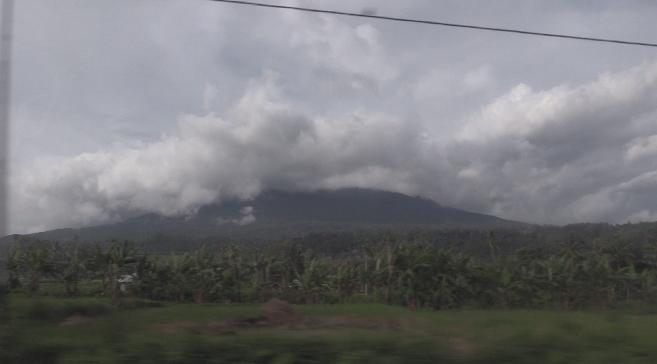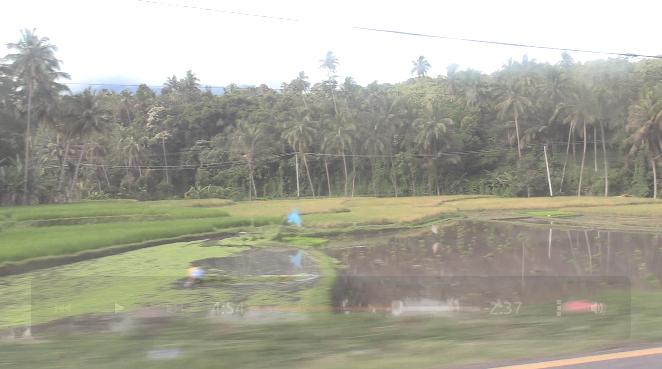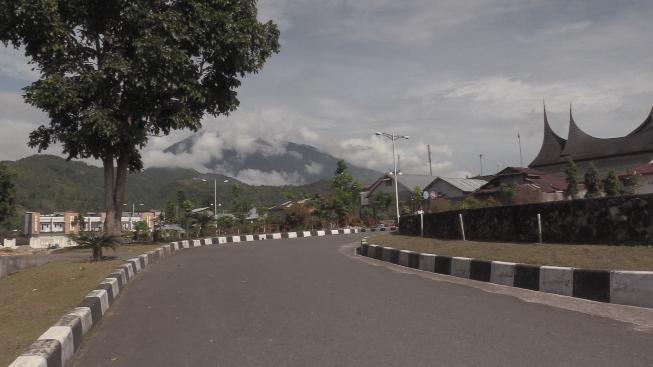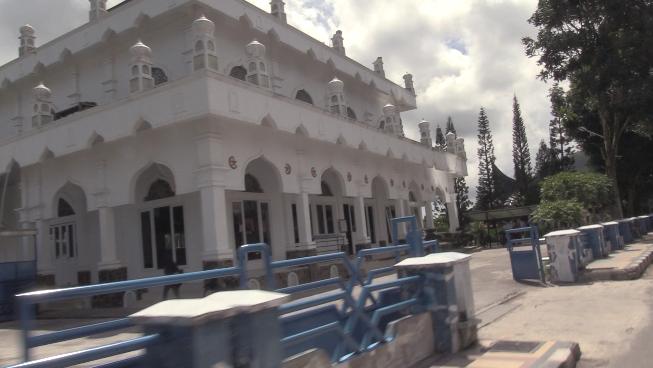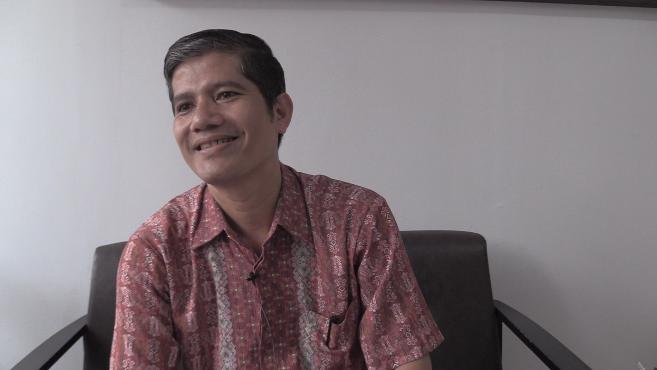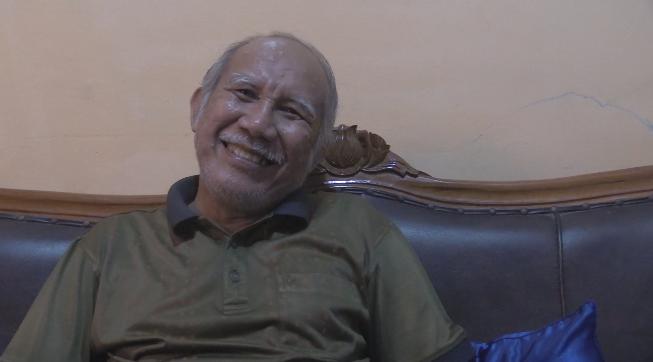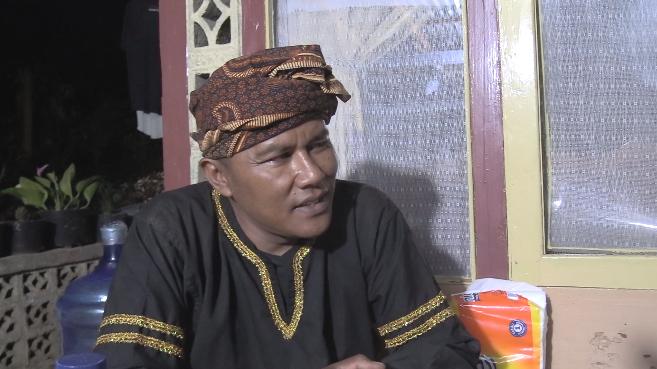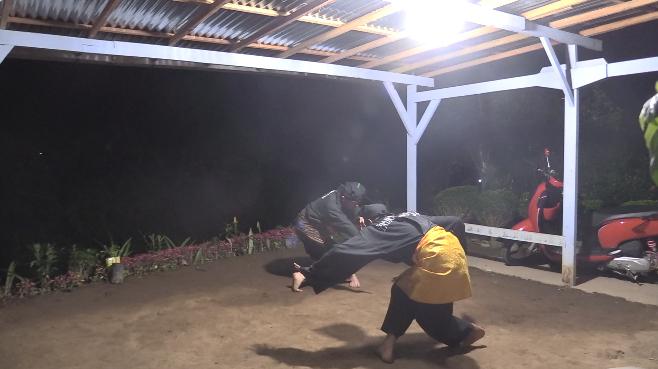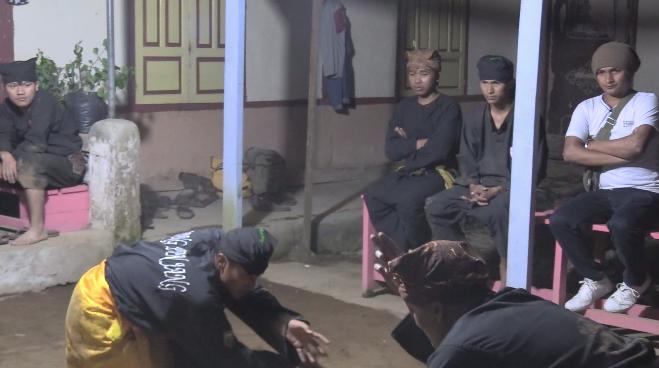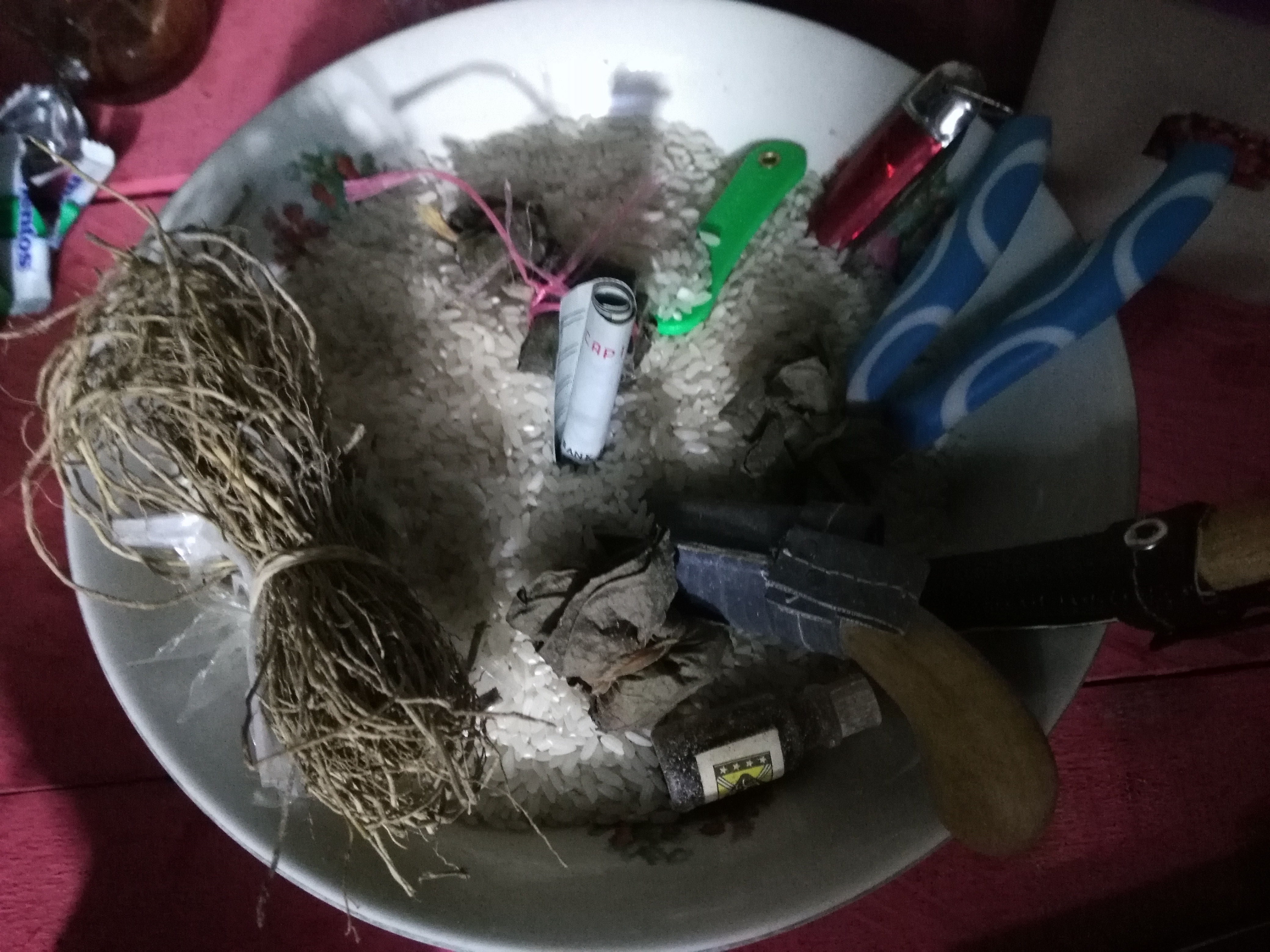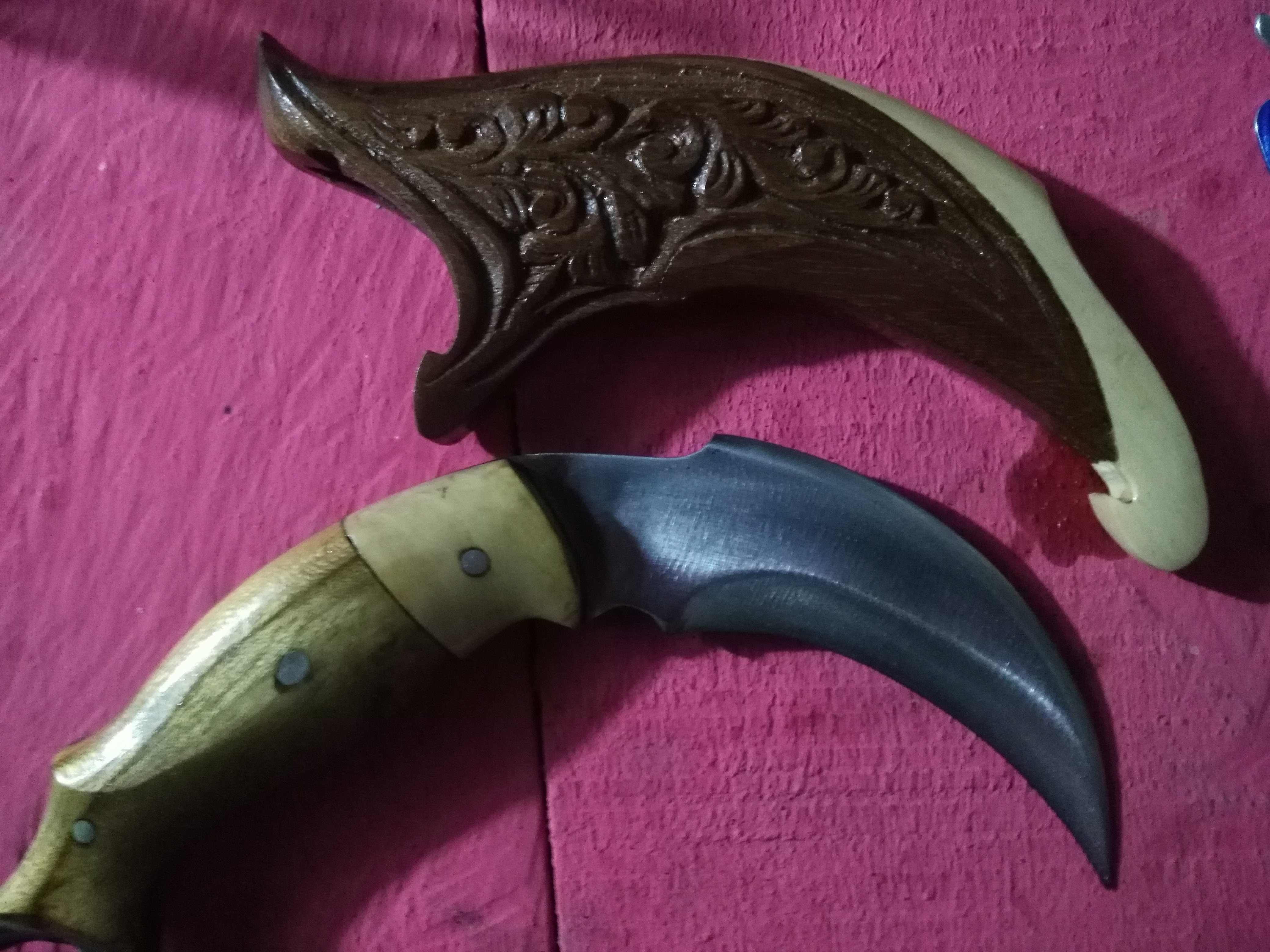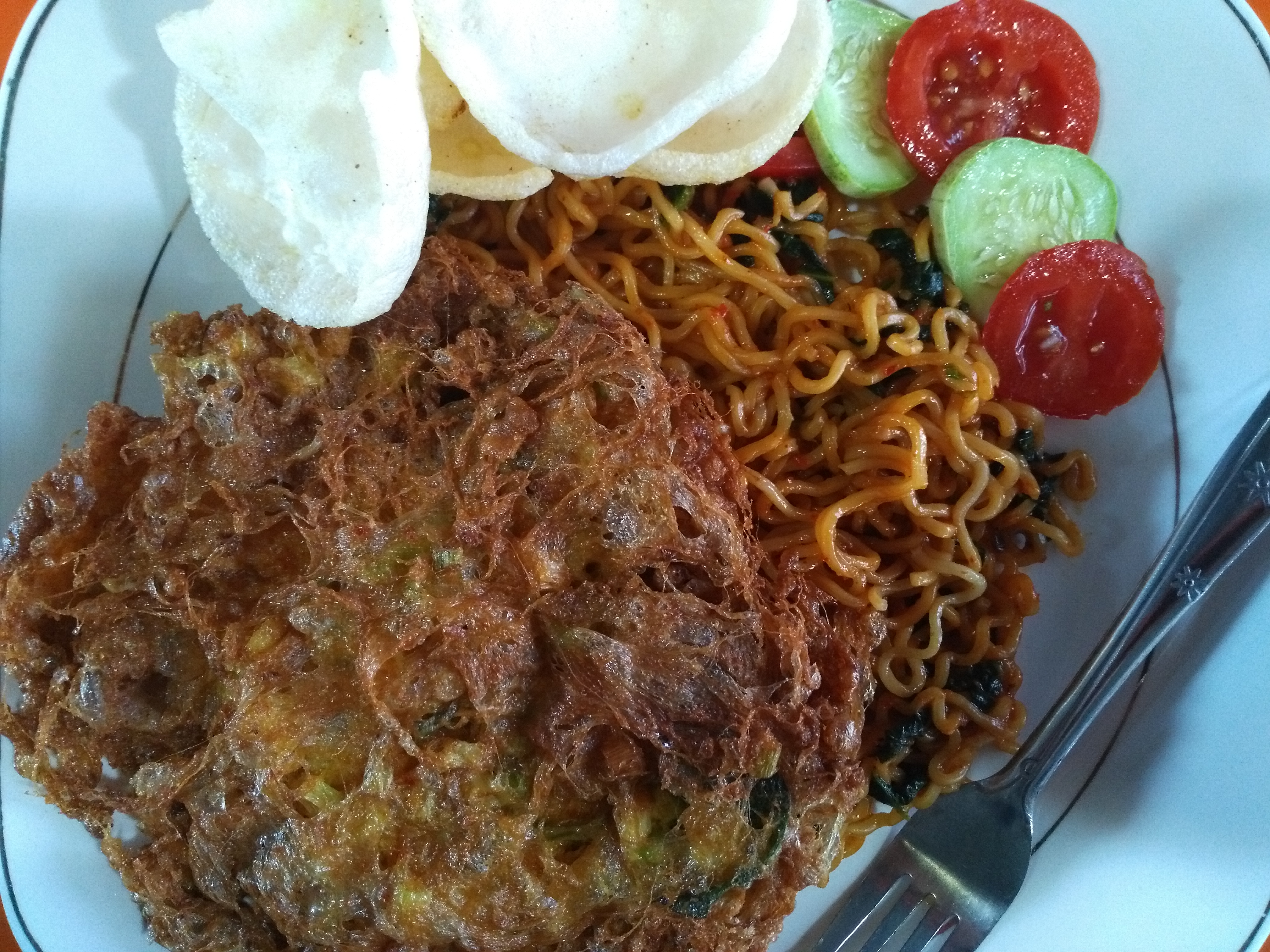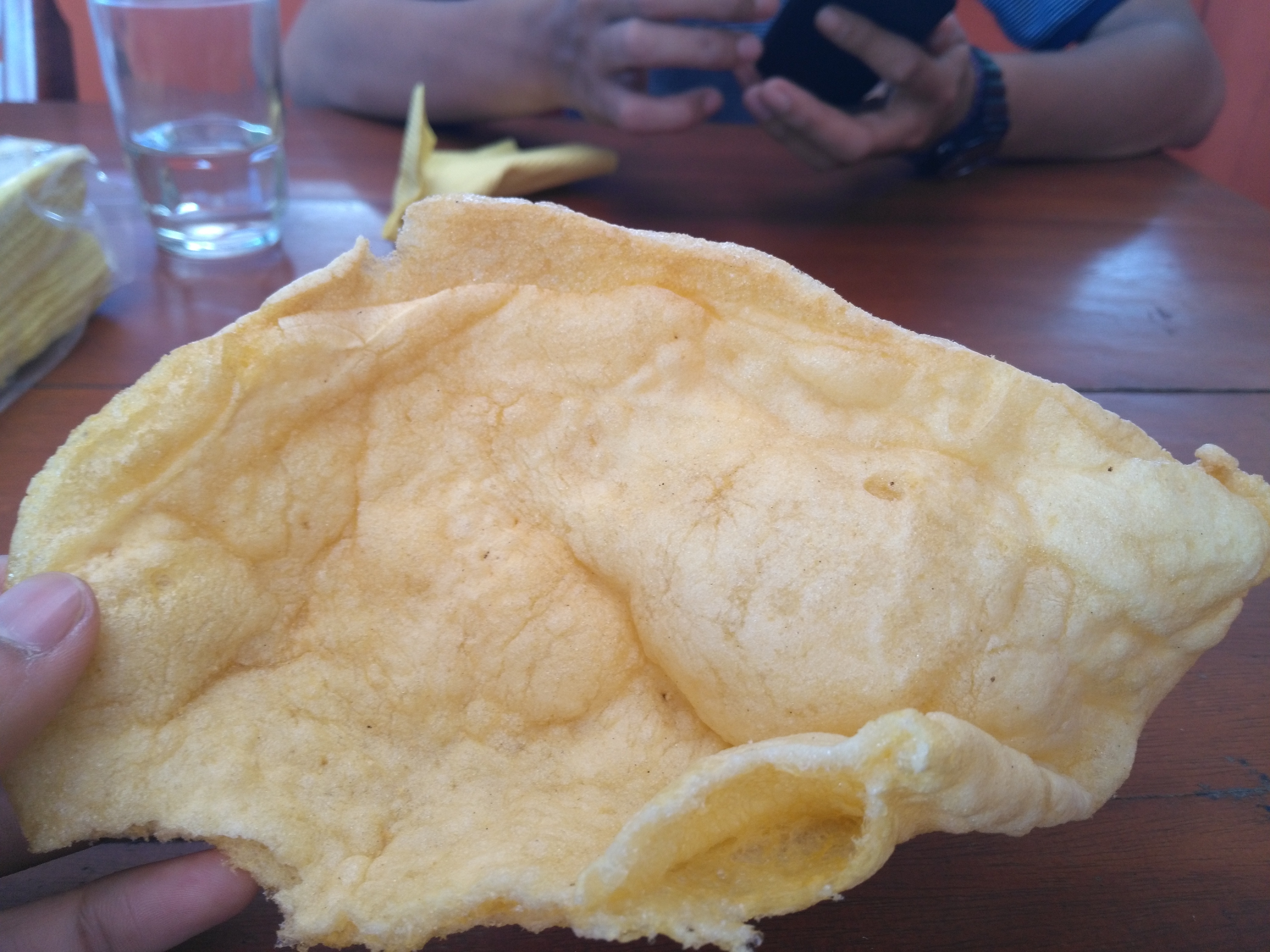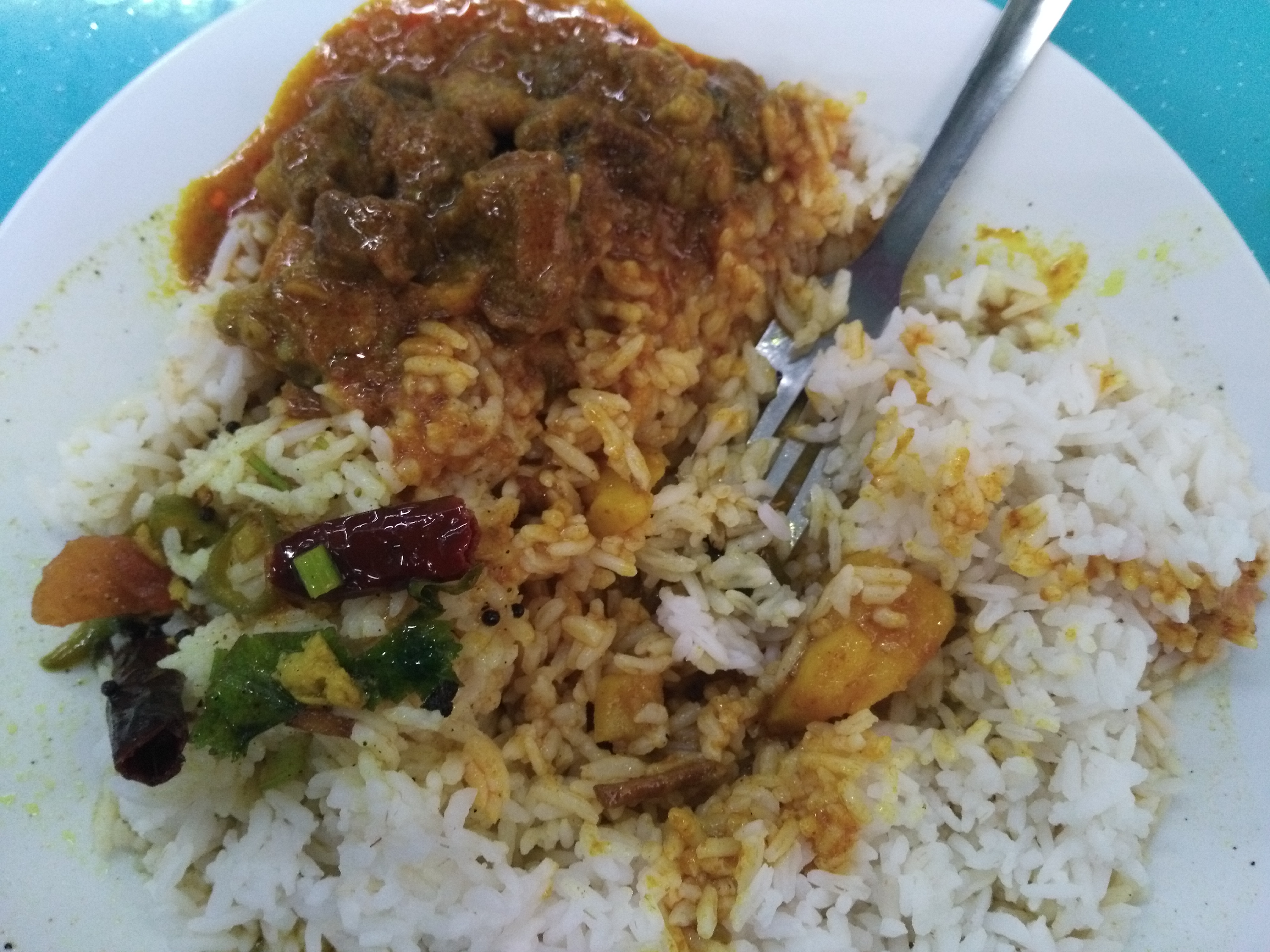Sumatran Interviews: Round 2
22 Oct 2017
Reading time ~19 minutes
Half-way into my past week, I left Batusangkar and made the breathtaking half-hour journey by car to the neighboring town of Padang Panjang, where one of Indonesia’s four state institutes dedicated to performing and fine arts is located (Institut Seni Indonesia, Padang Panjang, aka. ISI Padang Panjang). Besides ISI Padang Panjang in West Sumatra, there’s ISI Surakarta (Java), ISI Jogjakarta (Java), and ISI Denpasar (Bali). As with in Batusangkar, I spent most of my time on a college campus interviewing students and faculty members. Here’s a string of photos testifying to the gorgeousness of the scenery I witnessed on my way there.
Desmawardi Buya
My first interview at ISI Padang Panjang was with Mr. Desmawardi Buya, an ethnomusicology professor specializing in traditional Islamic music of the Minangkabau. In fact, Mr. Desmawardi pioneered the inclusion of Islamic music in ISI Padang Panjang’s traditional music curriculum. Prior to his arrival, there was traditional music of all kinds of the Minangkabau at ISI Padang Panjang, but none of it had to do with Islam. At our interview’s onset, Mr. Desmawardi emphasized that the debate on music in Islam should not concern a judgement between one musical instrument/sound over another, one musical genre over another, or religious music versus secular music. He believes such concerns are irrelevant to the debate. Getting caught up in such details is to miss the underlying spirit of limitations on behavior and action in Islam altogether. In Mr. Desmawardi’s view, the permissibility of a given song, dance, or dramatic performance foremost depends on the content of a given piece as well as the intentions of performers or players. Heavy metal isn’t inherently less permissible than smooth jazz, because a song in the former genre could have good lyrics and be used to promote peace while a song in the later genre may be used for the opposite purpose. Even more, he emphasized that the overall effect of a given performance is more important to consider than the exact elements comprising the performance. He conceded that there are and will likely continue to be anti-music voices for quite some time who cry shirk or bid’ah at the sight or thought of pre-Islamic elements of traditional music making. In the course of our interview, Mr. Desmawardi vocally demonstrated a wealth of traditional Minangkabau Islamic music making, noting that Islamic music is widely accepted by Minangkabau society as not just permissible but desireable.
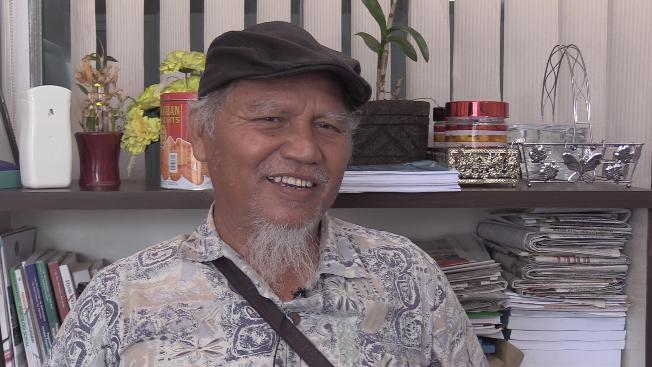
Mr. Zulfahmi
My next meeting was with Professor Zulfahmi, a lecturer of karawitan Minangkabau (minangkabau orchestral music of sorts) and Melayu music at ISI Padang Panjang. His background in the arts and media spans sculpture, painting, music performance (mostly in Melayu music contexts on the violin) both live and broadcasting in television. Originally from North Sumatra, i.e. not an ethnic Minangkabau, Mr. Zulfahmi earned a bachelor’s degree in ethnomusicology from the University of North Sumatra in 1995 and later a master’s degree in sculpture from Gajah Mada University Yogyakarta in 2009. He’s travelled regularly throughout Southeast Asia to perform a variety of traditional Malay and Thai music particularly to accompany traditional dance. Mr. Zulfahmi studied Islam in the context of general religion classes in primary and secondary school. Before and immediately after commencing his musical career, he was never very concerned with or even aware of the controversies surrounding music in Islam. In the early 2000’s, Mr. Zulfahmi started to investigate the matter among other controversies in Islam in more depth. Thanks to the guidance of an influential kyai or religious authority he met in Jakarta, Mr. Zulfahmi wholeheartedly accepted and continues to believe that music listening and making is entirely haram in Islam. Such conclusions are largely informed by hadith or records/documentations of the Prophet Muhammad’s sayings, actions, and behaviors such as the following selection from Sahih Bukhari, Book #69, Drinks, Hadith #494v:
From among my followers there will be some people who will consider illegal sexual intercourse, the wearing of silk, the drinking of alcoholic drinks and the use of musical instruments, as lawful. And there will be some people who will stay near the side of a mountain and in the evening their shepherd will come to them with their sheep and ask them for something, but they will say to him, ‘Return to us tomorrow.’ Allah will destroy them during the night and will let the mountain fall on them, and He will transform the rest of them into monkeys and pigs and they will remain so till the Day of Resurrection.”
As a proponent of music making and listening in Islam, I would argue that this specific hadith should not be interpreted to mean that music making of all shapes and sizes are to be equally condemned. One simply need to refer to the form of music making and listening that permeated pre-Islamic Arab society which largely entailed entertainer courtesans who danced, sang, bartented liquor, and prostituted themselves for their largely male clients and slave masters - the exact things that this hadith includes in one sentence, i.e. the typical things one would find 7th century harem in Arabia (i.e. silk, alcohol, zina or adultery/fornication, and musical instruments). It seems to me that this suggests that the Prophet had a rather specific form of music making and listening in mind when making this statement, as opposed to, for instance, a couple of girls singing and playing the tambourine during Eid festivities, which the Prophet explicitly approved of in one recorded occasion in this hadith:
Abu Bakr came to my house while two small Ansari girls were singing beside me the stories of the Ansar concerning the Day of Buath. And they were not singers. Abu Bakr said protestingly, “Musical instruments of Satan in the house of Allah’s Apostle!” It happened on the ‘Id day and Allah’s Apostle said, “O Abu Bakr! There is an ‘Id for every nation and this is our ‘Id.”
Nonetheless, after learning about several anti-music hadith from his guru agama or religion teacher in Jakarta, Mr. Zulfahmi could no longer justify music making and listening as a halal activity in his life. Despite his newfound awareness, Mr. Zulfahmi could not and cannot simply forfeit his musical engagements for good, because he must continue putting food on the table. Music had always been his primary income source. Till this day, Mr. Zulfahmi continues teaching and performing music, albeit with a deep sense of guilt and an urge to seek repentance after every lesson or performance or practice session he participates in. One may liken this behavior to devout Muslims addicted to cigarrettes who may do the same after finishing a cigarrette. Mr. Zulfahmi’s predicament can also be likened to if a Muslim went the majority of his life selling liquor for a living only to suddenly learn at middle age and be convinced of the fact that intoxication is strictly haram in Islam. Mr. Zulfahmi told me that he has no choice but to continue his life in this conflicting manner until it comes time for his retirement, when he hopes to have saved enough money to be able to commit himself entirely to spiritual life in his retirement.
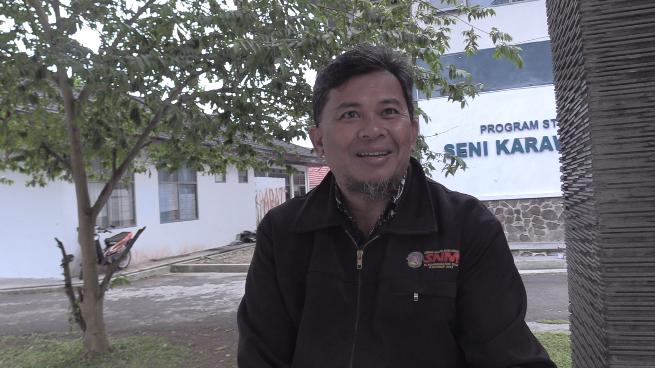
Dr. Febri Yulika and Dr. H. Saifullah
I was able to kill two birds with one stone by interviewing Dr. Febri Yulika, Professor of Islamic Studies at ISI Padang Panjang, and his father-in-law Dr. H. Saifullah, Professor of Islamic History and Culture at IAIN Imam Bonjol Padang. Though I interviewed the two academics separately, both squarely objected to the notion that music making or listening is intrinsically and entirely haram in Islam. Professor Saifullah, as with some rather staunch pro-arts advocates, went so far as to claim that the debate on music in Islam has been fully resolved for some time, that is in favor of music making and listening. Interestingly enough, staunch anti-music Muslims will make similar appeals to the “already solved” nature of the debate. They often claim that all the Islamic scholars of the four major jurisprudential schools of Sunni Islamic thought (Hanafi, Maliki, Shafi’i, Hanbali) have reached a consensus on the matter, declaring music making or listening more or less prohibited in Islam. It has seemed that certain members of both parties wish to disavow any possible credibility on part of members belonging to the other party.
At any rate, both professors Yulika and Saifullah emphasized that music isn’t instrinsically haram, but rather only has the potential to become haram by association. This is a rather important distinction that bears further explanation. In Islamic jurisprudence, all human action or acts can be hierarchically categorized into five levels of permissibility known as the al-ahkam al-khamsah:
- Fard/wajib (obligatory): earn reward for completion, earn punishment for abstention; e.g. praying, fasting.
- Mustahab/sunnah (recommended): earn reward for completion, earning nothing for abstention; e.g. breaking fast at maghrib, 2 rakah’s after Maghrib, using misawaak
- Mubah (permissible/neutral): earn nothing for completion, earn nothing for abstention; e.g. eating food, sleeping, blinking.
- Makruh (disliked/hated): earn nothing for completion, earn reward for abstention; e.g. staying awake after Isya.
- Haraam (prohibited); earn punishment for completion, earn reward for abstention; e.g. eating pork, adultery/fornication, murder.
In addition to delineating these categories of action, we must distinguish between two kinds of haram:
- Al-harām li-dhātihi: prohibition on the basis of harmful essence or intrinsic harm.
- Al-haram li-ghairihi: prohibition not on the basis of the essential effect of an action but rather on the basis of one action, sinful or not, being associated with some other action that is essentially harmful (Al-harām li-dhātihi); e.g. money earned illicitly or prayer conducted in trespassed property.
Thus, professor’s Yulika and Saifullah would reject music’s categorization as al-harām li-dhātihi, but would rather label music in some situations as al-haram li-ghairihi. Professor Saifullah also touched on the permissiblity of dancing in Islam during our meeting for a bit. He told me that the Prophet never forbid dancing and watching dance, given the following three requirements were met during the Prophet’s time:
- Dancers must be men.
- Dancing should not be done in public.
- Dancing should not be frivolous or time-wasting; presumably, dancing should be engaged in for a good purpose.
Professor Saifullah also made Islam’s stance on the permissibility of sculpting clear by mentioning the fact that the Prophet Muhammad destroyed 360 idols which were housed in the Kaaba upon the Prophet Muhammad and the Muslim army’s arrival to Mecca from Medina after living in exile there. The Prophet Muhammad did this to eliminate all further attempts at paganism and idol worship in Mecca as it had long been a popular, annual destination for pilgrims from throughout Arabia. In addition to strict objections made towards sculpting, some Muslims disapprove of paintings or photography that depict human or animal subjects. While landscape paintings and photos of food are totally fair game, some devout Muslims are rather hesitant to have their portraits taken or be filmed, especially due to the existence of the following hadith:
Ibn Abbas (May Allah be pleased with them) said: I heard the Messenger of Allah (sallallaahu ’alayhi wa sallam) saying, “Every painter will go to Hell, and for every portrait he has made, there will be appointed one who will chastise him in the Hell.’’ Ibn `Abbas said: If you have to do it, draw pictures of trees and other inanimate things. (Al-Bukhari and Muslim).
Some pro-arts Muslims will go so far as to dispute the authenticity of the narrators of such hadith, while others attempt to place the Prophet’s sayings and actions in such hadith in more context that helps to limit the scope of judgement that such hadith pose.
A Couple of Minangkabau Martial Arts Masters: Da-i and Edwardo Guci:
When first cooking up my original project proposal for the Watson fellowship, I didn’t imagine that I’d be interviewing a master of martial arts in a year’s time, but that’s precisely what took place on two separate occasions this past week. The first of these interviews was with a teacher and practicioner of silat/silet Minangkabau (Minangkabau martial arts) who goes by the name Da-i. My interview with Da-i took place intervalically at his private residence high up in the mountains of Padang Panjang during breaks he took while teaching a half-dozen students into the wee hours of the night. Da-i and his students practice train barefeet on carefully prepared earth under a small pendopo. A few harsh light bulbs illuminated the scurrying movements of the martial arts students against the backdrop of moonlit hills and the starry night sky. Throughout the practice, traditional saluang music was playing from a stereo system and a hearty, local coffee brew was in abundance. The evening generally followed the following repeating pattern:
- Da-i decimates one of his students in combat (sometimes with blunt kris - a traditional knife used for combat).
- After he’s put one of his students in his right place, I ask Da-i a few questions about Islam and silat/silet Minangkabau while he catches his breath in preparation for the next sorry soul to obliterate.
I found my way as a voyeur to this magical environment having been informed that silat/silet Minangkabau in its current day form is intimately tied with Islam and spirituality. Though the origins of pencak silat/silet or martial arts more generally far pre-date the arrival of Islam to Southeast Asia, Da-i told me that faith in Allah and Islamic values play a major role in the practice of silat/silet Minangkabau today. Although Da-i has imparted knoweldge to and trained Muslims and non-Muslims alike, he maintains that only those who entirely put their faith and trust in Allah are able to truly reap the benefits of silat/silet Minangkabau training. A spiritually enlightened person as opposed to one who fights solely with one’s fists is believed to gain special powers and additional protections against one’s enemies when engaged in combat. Even so, Da-i does not force any of his students to embrace Islam. He only imparts religious knowledge upon those of his students who are interested in the alleged spiritual benefits of Islamic faith in the practice of silat/silet Minangkabau.
Another highly Islamic concept that is fundamental to the modern-day practice of silat/silet Minangkabau is the importance of self-defense. It goes without saying that Islam, unlike Buddhism or, even more keenly, Jainism, is not a religion of pacifism. Of course, that does not mean that Islam does not prescribe peace as strongly preferrable to war. Indeed, violence and resistence more generally is only sanctioned in Islam for the purpose of securing peace or justice as soon as possible where it currently does not exist or combatting oppression and injustice more generally. Muslims must be vigilant in defending the livelihood of Islam in addition to securing their personal property and individual livelihoods. It’s common for people to place notable pacifists or semi-pacifists in history who advocated for civil disobedience or non-violent resistence such as Martin Luther King Jr. on a pedestal of moral superiority as opposed to leaders and revolutionaries who’ve advocated for and used violence as a means to an end such as Malcolm X. However, it can very much be argued that in some cases, the use of violence to counter some external injustice or aggression is ethically superior to pacifistically protesting the external injustice or aggression, of course.
Da-i told me that a majority of boys and men in Minangkabau have studied at least the very basics of silat/silet Minangkabau. Silat Minangkabau is one of several aspects of traditional Minangkabau education that boys living in especially traditional contexts are expected to undergo in addition to general schooling. While self-defense is considered a virtue among the virtually 100% Muslim population of the Minangkabau, violence inflicted upon others without proper pretext strictly goes against the code of conduct of sincere practitioners and trainers of silat/silet Minangkabau. The status and place of women in the practice and pedagogy of silat/silet Minangkabau, often the elephant in the room in the research contexts I’ve submersed myself in thus far, also came up during the course of my interview with Da-i. Contrary to my assumption on the matter, Da-i told me that here have been a number of highly influential female teachers of silat/silet Minangkabau in history, but their numbers are certainly dwindling today, which are likely to be in the single digits. Da-i told me this is largely due to a mentality shift in both women and men. Many people, including women themselves, no longer see the need for women to learn self-defense, because women are increasingly leading lives as stay at home wives/mothers. People apparently feel, therefore, that there are fewer threats to womens’ livelihoods, simply because women are out and about less than they once were. This of course looks over the fact that a woman may want to know how to defend herself especialy against male members of her own immediate family who likely would have gotten down the fundamentals of silat/silet Minangkabau before young adulthood.
A couple of days after auditing Da-i’s practice session at his lovely residence in Padang Panjang, I visited the lovely residence of Mr. Edwardo Guci in Padang, just before catching my flight to Kuala Lumpur. While my time with Da-i mostly afforded me hands on and practical information regarding silat/silet Minangkabau, my interview with Mr. Guci was solely a verbal exchange largely concerning the history and philosophy of silat/silet Minangkabau and how that history and philosophy ties in with Islamic history and phisolophy in West Sumatra. Mr. Guci has undergone painstaking, self-funded, and independent research to rigorously investigate the history of silat/silet Minangkabau to combat the many myths that he claims deludes many students and teachers of the silat/silet Minangkabau today. The biggest assumption that Mr. Guci debunked for me is the notion that silat/silet originated with the arrival of Islam to West Sumatra. It is not uncommon for teachers to point out, fallaciously as Mr. Guci argues, that silat/silet is etymologically and conceptually derived from the Arabic salat/solat or prayer. Teachers will thus rationalize the need for Muslim students to learn silat/silet as an outdoor activity that serves as a natural counterpart to the salat/solat that a Muslim is obligated to perform ideally within a mosque. Such teachers will emphasize the idea that the practice of silat/silet gets Muslim students in the habit of placing their faith in God so that they may remain single-minded in combat. While Mr. Guci surely recognizes the importance of such practice, he maintains that the origins of silat/silet Minangkabau are far removed from the arrival of Islam to Southeast Asia. The word silat/silet, according to Mr. Gucci, actually refers to the hybridization of martial arts techniques of the following “four influences”:
- Harimo champo (the tiger from Champo, i.e. present-day Cambodia)
- Kuciang Siam (the cat from Siam, i.e. present-day Thailand)
- Kambian Hutan (the jungle/mountain god)
- Angam Walim (the expert of sailing)
Relating the detailed backstories behind each of these influences is beyond the scope of this post. Nonetheless, the motivation on part of silat/silet teachers, silat/silet students, and the general public to ignore these historical realities can be explained in two ways:
- A lack of awareness or ignorance on part of practitioners and the general public
- An unwillingess to recognize aspects of pre-Islamic culture as being part of the history of a local population whose ethnic identity is virtually synonymous with their religious identity (i.e. the Minangkabau and Islam, similar to the Malays and Islam especially in Malaysia). This unwillingness often manifests in historical revisionism or obscurantism that invalidates the possibility of being, for example, Minangkabau and not Muslim or Malay and not Muslim. Of course, there are Malay Christians, Buddhists, and Hindus but their numbers and influence are so small that they are often overlooked or neglected in popular discourse on religion and society in Malaysia. For many people in this day and age, Malay does not quite mean Malay or Minangkabau does not quite mean Minangkabau without Islam.
By pointing this out, of course, Mr. Guci does not mean to invalidate the influence of Islam in the origins or modification of many aspects of traditional Minangkabau arts and culture that exist today. Mr. Guci maintains that the the well-known dance-drama form randai is derived from the Arabic rayan dai. Thus, much of current day randai performance is concerned with the propagation of Islamic doctrine and values. Along with well-known indigenous art forms which were thoroughly Islamized, such as wayang kulit, randai played a great role in the early introduction of Islam to West Sumatra. Other Islamic art forms native to the region and neighboring regions include tari saman (saman dance) particularly in Aceh, tari endang/indang/babindin in Indonesia and Malaysia, and the ubiquitous Mawlid al-Barzanjī (The Barzanji Mawlid). Mr. Guci told me that the dance genres among these artforms played a vital role in preserving silat/silet Minangkabau during Dutch colonial rule as dancers appropriated fundamental techniques and movements of silat/silet Minangkabau into traditional dance forms. This was necessary, because the Dutch had completely outlawed the practice of silat/silet for obvious reasons such as safeguarding the physical well-being of colonial masters and administrators from indigenous Indonesian assassins. This piece of information demystifies why so much of traditional dancing in Indonesia resembles the practice of silat/silet.
Tasty Treats in Indolaysia (i.e. Indonesia & Malaysia)
Yes I just coined a new country. Sorry, but this time around I don’t have very much food for y’all to indulge in. I promise that will change starting next week.
